The changing epidemiology of dengue in China, 1990-2014: a descriptive analysis of 25 years of nationwide surveillance data
- PMID: 25925417
- PMCID: PMC4431043
- DOI: 10.1186/s12916-015-0336-1
The changing epidemiology of dengue in China, 1990-2014: a descriptive analysis of 25 years of nationwide surveillance data
Abstract
Background: Dengue has been a notifiable disease in China since 1 September 1989. Cases have been reported each year during the past 25 years of dramatic socio-economic changes in China, and reached a historical high in 2014. This study describes the changing epidemiology of dengue in China during this period, to identify high-risk areas and seasons and to inform dengue prevention and control activities.
Methods: We describe the incidence and distribution of dengue in mainland China using notifiable surveillance data from 1990-2014, which includes classification of imported and indigenous cases from 2005-2014.
Results: From 1990-2014, 69,321 cases of dengue including 11 deaths were reported in mainland China, equating to 2.2 cases per one million residents. The highest number was recorded in 2014 (47,056 cases). The number of provinces affected has increased, from a median of three provinces per year (range: 1 to 5 provinces) during 1990-2000 to a median of 14.5 provinces per year (range: 5 to 26 provinces) during 2001-2014. During 2005-2014, imported cases were reported almost every month and 28 provinces (90.3%) were affected. However, 99.8% of indigenous cases occurred between July and November. The regions reporting indigenous cases have expanded from the coastal provinces of southern China and provinces adjacent to Southeast Asia to the central part of China. Dengue virus serotypes 1, 2, 3, and 4 were all detected from 2009-2014.
Conclusions: In China, the area affected by dengue has expanded since 2000 and the incidence has increased steadily since 2012, for both imported and indigenous dengue. Surveillance and control strategies should be adjusted to account for these changes, and further research should explore the drivers of these trends.
Figures
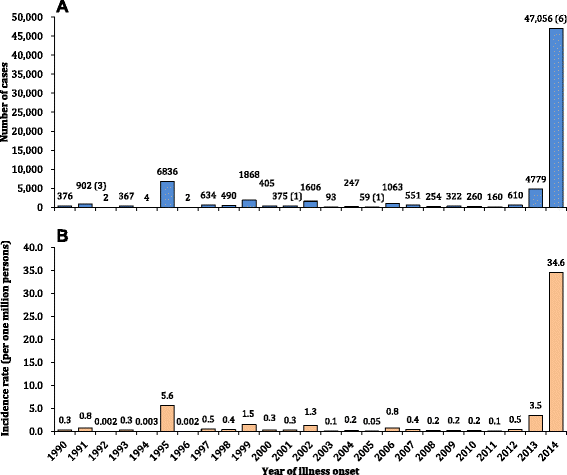
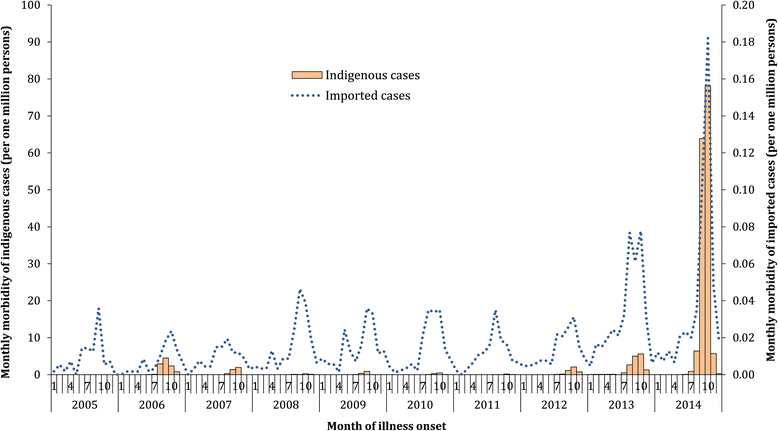
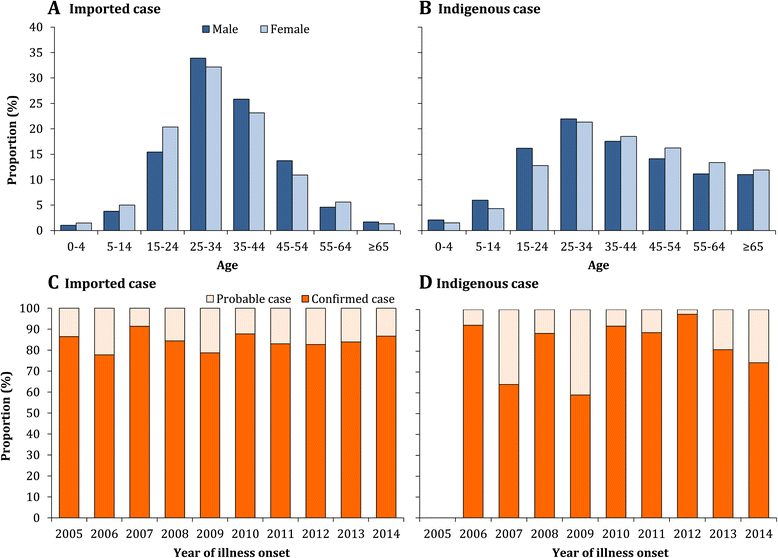
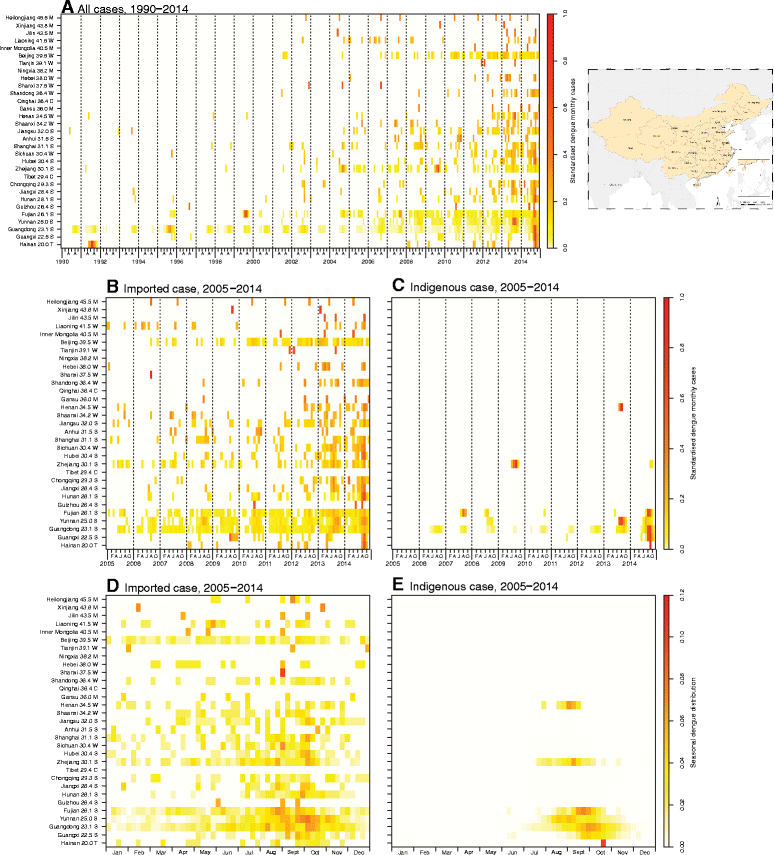
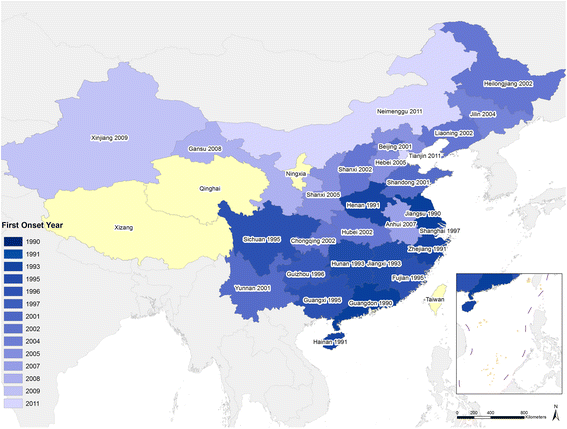

Comment in
-
The re-emergence of dengue in China.BMC Med. 2015 Apr 28;13:99. doi: 10.1186/s12916-015-0345-0. BMC Med. 2015. PMID: 25925732 Free PMC article.
References
-
- World Health Organization: Dengue: guidelines for diagnosis, treatment, prevention and control. http://www.who.int/csr/resources/publications/dengue_9789241547871/en (2009). Accessed 15 November 2014. - PubMed
-
- World Health Organization: Impact of dengue. http://www.who.int/csr/disease/dengue/impact/en. Accessed 27 November 2014.
Publication types
MeSH terms
Grants and funding
LinkOut - more resources
Full Text Sources
Other Literature Sources
Medical
Miscellaneous

